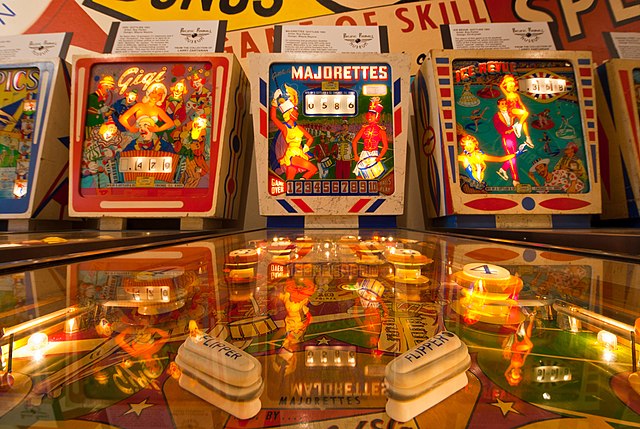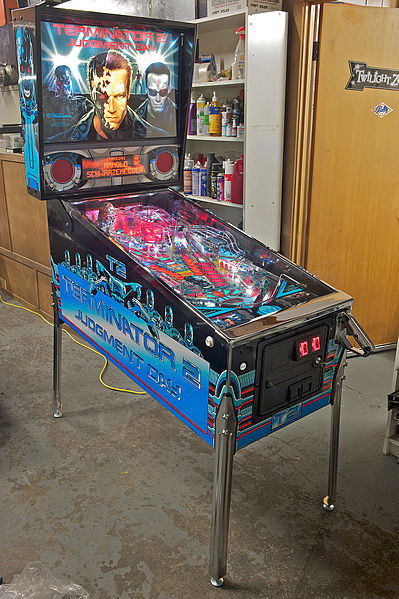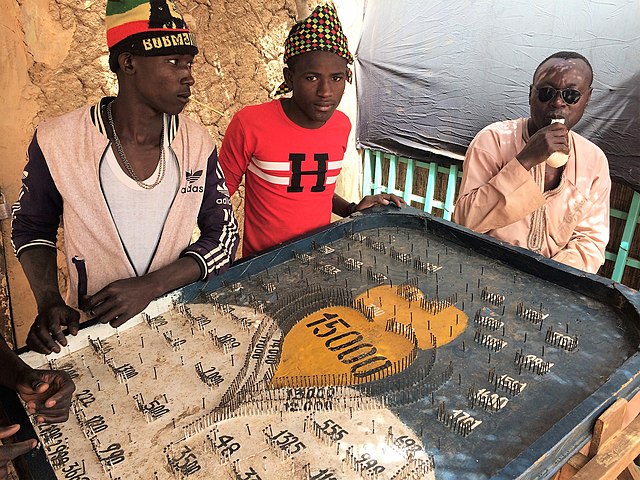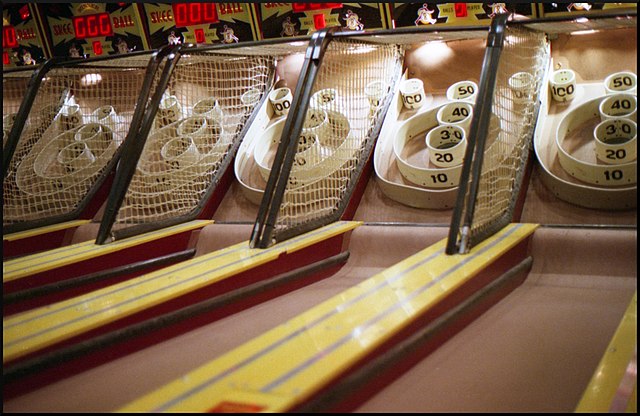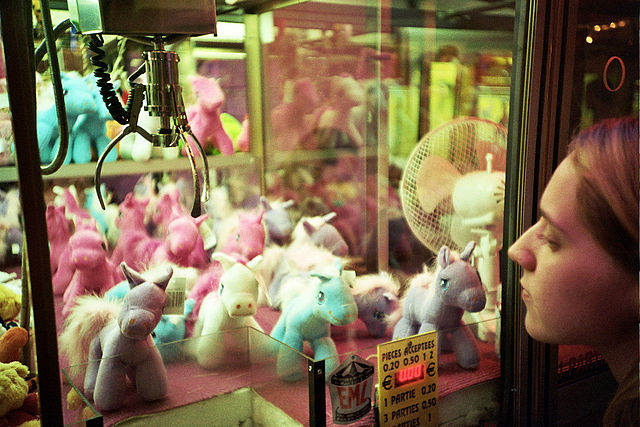Pinball games are a family of games in which a ball is propelled into a specially designed table where it bounces off various obstacles, scoring points either en route or when it comes to rest. Historically the board was studded with nails called 'pins' and had hollows or pockets which scored points if the ball came to rest in them. Today, pinball is most commonly an arcade game in which the ball is fired into a specially designed cabinet known as a pinball machine, hitting various lights, bumpers, ramps, and other targets depending on its design. The game's object is generally to score as many points as possible by hitting these targets and making various shots with flippers before the ball is lost. Most pinball machines use one ball per turn, and the game ends when the ball(s) from the last turn are lost. The biggest pinball machine manufacturers historically include Bally Manufacturing, Gottlieb, Williams Electronics and Stern Pinball.
Pinball
Terminator 2: Judgment Day, 1991 pinball machine designed by Steve Ritchie
A self-made pinball game in Niger
Billard japonais, Alsace, France c. 1750–70. It already has a spring mechanism to propel the ball, 100 years before Montague Redgrave's patent.
An arcade game or coin-op game is a coin-operated entertainment machine typically installed in public businesses such as restaurants, bars and amusement arcades. Most arcade games are presented as primarily games of skill and include arcade video games, pinball machines, electro-mechanical games, redemption games or merchandisers.
An amusement arcade featuring several different types of arcade games, located in Chiba Prefecture, Japan
Arcade video games at ZBase Entertainment Center in Tampere, Finland
Skee-Ball was one of the first arcade games developed.
A claw crane game, where one must time the movement of the claw to grab a prize

